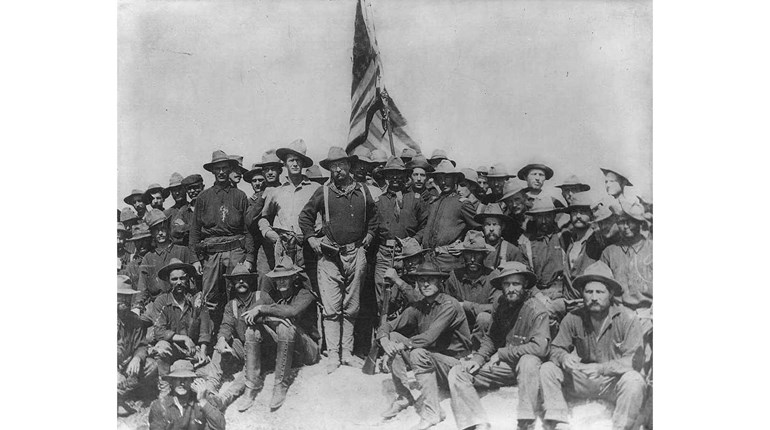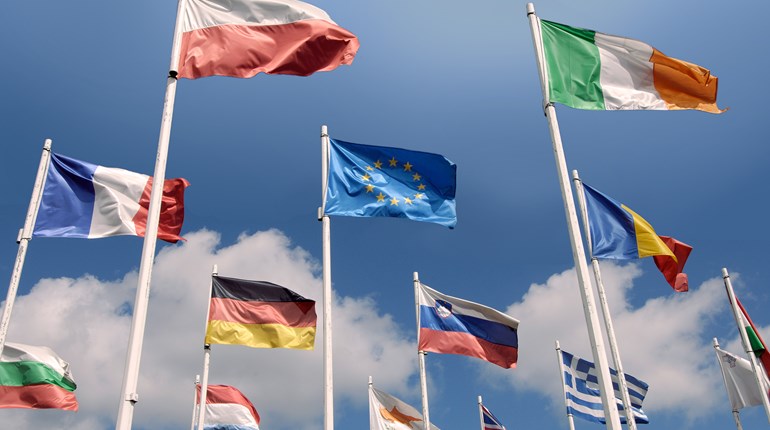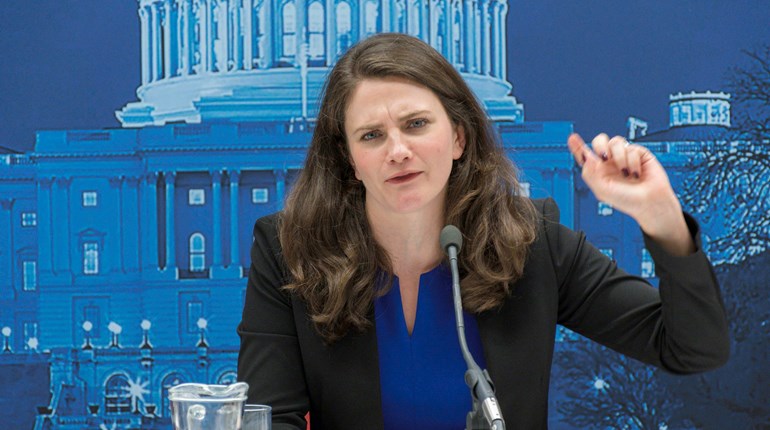
In order to understand the chaos of European politics and the resulting regulation of civilian firearms ownership, one has to step back in time and consider the historic developments. In Europe, to own or carry a weapon—namely a gun—was seldom a right. Sometimes it could become a duty, such as when called up for the defense of the realm. For a select minority, the ruling or aristocratic class, it was considered a privilege, along with the right to hunt on their own estates.
During the last quarter of the 18th century, two revolutions occurred that shaped our understanding of politics to this day. Only one of the two—the American Revolution—was successful. The defining fundamentals of this new nation were threefold: the Declaration of Independence, the U.S. Constitution and its first 10 amendments, which are known as the U.S. Bill of Rights. Together, these form an exemplary system of democratic government based on the consent of the governed, of checks and balances and the limitations of governmental power versus the freedoms and rights of the individual citizen.
The French revolutionaries were greatly inspired by the American Revolution and its ideals when they started their social and political upheaval in Paris in 1789. None less than the Marquis de Lafayette, an eyewitness and one of the foreign heroes of the American Revolutionary War, drafted the French Declaration of the Rights of Man and of the Citizen with the help of Thomas Jefferson, then the U.S. Minister to France.

To counterbalance the royal army, an armed-citizen force was established by the national assembly, called the “National Guard,” which soon became the driving force behind the storming of the Bastille. Its motto was “Liberty, Equality, Fraternity or Death,” but not much remained of this and the other magnanimous ideas of the Age of Enlightenment when sectarianism and infighting turned the revolutionary first French Republic into the “Reign of Terror” (1792-94). At the same time, the neighboring kingdoms, with Prussia and Austria in the lead, started to intervene militarily to restore the French monarchy, which led to a series of wars in Europe that ultimately brought a young Corsican artillery officer to become emperor of France.
For more than two decades, Europe was embroiled in a transnational and often globally fought conflict that only ended after the battle of Waterloo in June 1815. Although the political landscape of Europe was changed, the old order of kingdoms and principalities was restored with the Congress of Vienna. From then on, every flare-up of revolutionary ideas was immediately suppressed. And, for the decade after Waterloo, terms like “democracy” or “individual rights” were synonymous with anarchy and subversion. Throughout the 19th century, the terrible example of the failed and blood-soaked French Revolution served as a grim argument against any attempt to change the established political order of upper and lower, ruling and working classes.
In some places, militia-type shooting associations or reservists clubs were permitted and encouraged by the authorities. In times of trouble, these organizations, recruited from the law-abiding middle and upper classes, were expected to serve as a local security or guard force. This was very much in the tradition of the medieval guilds, trade associations and craftsman brotherhoods, who also served as nightguards and defenders of their cities. But their firearms remained under control at the clubhouses and were only taken out for the annual parades, rifle training and shooting festivals.
The 1860s saw the proliferation of large national shooting associations in Western Europe, like the British Volunteer Rifle Corps or the German or Austrian Schützenbund, which transcended the national and provincial boundaries.
Thanks to the industrial production of firearms, the Swiss sport shooters, like their Austrian, British, German and French counterparts, opted for modern small-bore rifles instead of the usual large-caliber muskets, thus becoming a driving force in the development of accurate long-range military firearms. Other countries followed suit.
After the ceasefire on Nov. 11, 1918, Europe was awash in military arms. Demobilization was a mess in some of the countries, most notably in Germany and Austria, where thousands of soldiers headed straight for home, bringing their rifles and handguns with them. Some troops revolted; others went on strike, supporting the masses of disappointed, unemployed workers and hungry civilians. With the Bolshevik Revolution in 1917, the fear of a Russian-inspired communist takeover spread, and nearly every government issued ordinances to stem the flow of arms and to curtail private ownership of firearms.
In 1920, Britain saw the first all-encompassing gun law that controlled the purchase, possession and carrying of firearms. Guns required a certificate, approved by the local chief of police. Other countries issued similar legislation. Some, like France and Italy, prohibited civilian ownership of handgun and rifle ammunition as used by their armies with language that is still on the books to this day.

After World War I, Germany was under the control of the Military Inter-Allied Commission of Control, which limited the possession of any type of military armament. Only a small fraction of the more than 6.5 million small arms were left to be reissued to police and the 100,000-man army of what was then the Weimar Republic. Shooting clubs were prohibited from using “military-type” cartridges and firearms, which gave rise to a whole new line of small cartridges. The same happened to Austria, whose empire now became the bankruptcy estate out of which new independent nations like Czechoslovakia, Poland, Ukraine and the Balkan states came into being.
Decades later, a similar procedure repeated itself at the end of World War II, with one difference: In all those countries behind the Iron Curtain, which fell under the control of the Soviet Union, an extremely strict gun prohibition was introduced that even included antique breechloading and black-powder arms. Over the post-war years, a complicated plethora of gun laws came into existence in Western Europe that made traveling with guns for hunting trips or shooting competitions difficult or even dangerous. And it did not become much better when the Soviet Union crumbled and a number of new East European states gained political independence and joined the European Union (EU).
As a rule of thumb, nearly every country in Europe today demands a thorough background check, and some even require a psychology check-up, in order to obtain a firearm license. Most states require attendance of a gun-safety course and/or prior membership in a shooting club or hunting association. In nearly every state, the prospective owner has to detail a “valid reason” for specific firearms—self-defense is not considered a valid reason.
More and more countries, especially those bordering Russia and Belarus, realize that the EU firearms regulations run counter to their security concerns.
Most European countries will not issue carry permits to civilians for the purposes of protection of life and property even if they have a may-issue rule in their law books. The Czech Republic, Poland, Austria and Switzerland are the exceptions to that rule.
Some countries, like Switzerland, Austria, Italy and France, are a bit more liberal when it comes to issuing a license for double-barreled shotguns or small-caliber target rifles, but they are stricter in controlling semi-automatic firearms or pump-action shotguns.
As if all of that were not complicated enough, the EU got itself involved in the national legislation of gun-control laws as well by inventing a set of new categories in which, first and foremost, all full-automatic firearms are totally “prohibited items.” Other cornerstones of that “reform” include deactivated firearms of all kinds, firearms disguised as other objects, personal defense weapons (PDWs) and the introduction of a magazine ban.
Today, for an object lesson in European bureaucracy, one need not look further than to the arbitrary proceedings of the disputed DG Firearms Directive issued by the Directorate-General for Migration and Home Affairs (aka “DG Home”) and its misguided “Task Force” and highly questionable “Expert Group.” It began in 2012 with a declaration of intent supposedly to comply with the UN Firearms Protocol and aiming to interfere with illegal trafficking “of weapons from the recent Balkan war scenarios.”
By itself, that sounded like an honorable goal. But instead of developing measures to deal with organized crime or the amount of illegal military arms in former conflict regions (such as with an EU-financed buy-back program) they began to work on new guidelines for the deactivation of obsolete firearms. In lieu of going against criminal or terrorist networks, the EU turned on millions of their own law-abiding citizens: Hunters, shooters, arms collectors, private security companies, military reservist associations, historical reenactment groups and museums suffered an avalanche of new restraints and restrictive measures. Although the task force continued to disregard all criticism of its fraudulent statistics and misrepresentations of facts, the Firearms Directive lost steam.
But by the end of 2015, with Europe reeling under the shock of terrorist acts in Paris, Copenhagen and Brussels, it reemerged under a new label. In an unbelievable case of bureaucratic conceit, the EU Firearms Directive now became a frontline force to be used in the fight against Islamist terrorism. Actually, such windowdressing or fraudulent labeling is not new: Similar efforts of gun control occurred on the national level during the 1970s and 1980s, when Western Europe suffered from the first wave of international terrorism. From an administrative point of view, gun-control measures like they passed are nothing but a waste of finances and manpower. Politically, they reveal the cluelessness of the Brussels’ administrative bureaucracy and those elected representatives who are politically responsible.

On March 14, 2017, the DG Home Firearms Directive was accepted by the European Parliament with a vote of 491-178 (28 members abstained) and passed the European Council in April with only the Czech Republic, Luxembourg and Poland voting against the proposal. Published under No.(EU)2017/853 in its official journal on May 17, 2017, the member states were left with 15 months to implement the Directive into their national legal systems.
This came on top of an ongoing European-wide digital registration effort, in which every legal gun holder and trader, his or her licenses, all the firearms owned—including important parts thereof—as well as every transfer is thus monitored. As of 2015, it was estimated that there were more than 25 million firearms license holders within the EU, possessing a total of 80 million guns. Illegal—that is, non-registered—firearms were estimated by EU sources at 44 million, which some experts consider an underestimation. It goes without saying that as of this date, various partner states in the EU have not been able to fulfill all of their obligations at registering and data-filing under the new EU regulations. And the Covid-19 pandemic did not help much in speeding up the process. Nor did the new firearms directive in any way affect the amount of illegal gun trafficking in Europe, crime rates or the perpetration of terrorist attacks.
The future did look dreary for European firearms owners, but the eruption of the Ukrainian crisis in February 2022 has had an impact. More and more countries, especially those bordering Russia and Belarus, realized that the EU firearms regulations run counter to their security interests and defense efforts. The Czech Republic had been the first member state of the EU who openly challenged (unsuccessfully) the Firearms Directive as overreaching, disproportionate and discriminatory before the European Court of Justice in Luxembourg, with Poland and Hungary seconding the proceedings. Furthermore, in the summer of 2021, the Czech Parliament passed a constitutional amendment that underlined that bearing arms is a constitutional right: “The right to defend one’s own life or that of another person, even with arms, is guaranteed under the conditions laid down by law.”
Expecting some flak from DG Home on the liberal attitude of the “shall-issue” approach to licensing even semi-automatic arms to sport shooters and private-security companies, Czech politicians announced that with more interference from the Brussels bureaucracy, the country’s shooting association would be classified as the national army reserve, thereby exploiting one of the few loopholes of the EU Directive.
With perhaps less fanfare, other East European countries like Poland, Finland, Slovakia, Estonia and Latvia have used a similar bypass to circumvent the EU restrictions. After Russia’s occupation of the Crimea, Poland started a premilitary volunteer training program, in which high school and university students were introduced to the fine art of guerrilla warfare in the traditions of the Armia Krajowa, the Underground Home Army established in 1942. A similar concept, based on the U.S. National Guard, was adopted by Estonia, Latvia and Lithuania.
At first sight, Finland, with its 5.5 million inhabitants, seems to have a strict policy regarding civilian firearms ownership. But that impression is moderated when one takes the total amount of firearms into consideration: More than 1.5 million small arms are registered with the authorities and around 12-13% of the population have at least one firearm licensed. In wartime, the country can rely on an active force of nearly 300,000 men, backed up by 900,000 reserve personnel.
Only the future will tell how much the events in Ukraine will influence private gun ownership in Europe. For the moment, all eyes are glued on the very-effective defense the Ukrainian army has put up against the Russian juggernaut. When the Kyiv government distributed about 25,000 firearms to the city’s population to fight off an invasion, nobody was talking about gun licenses.


































